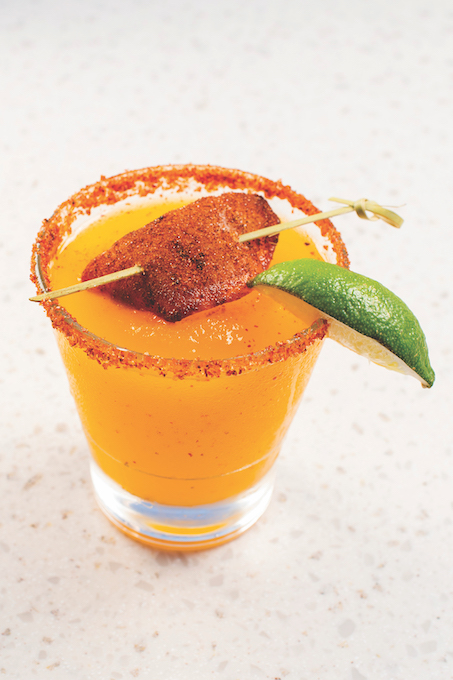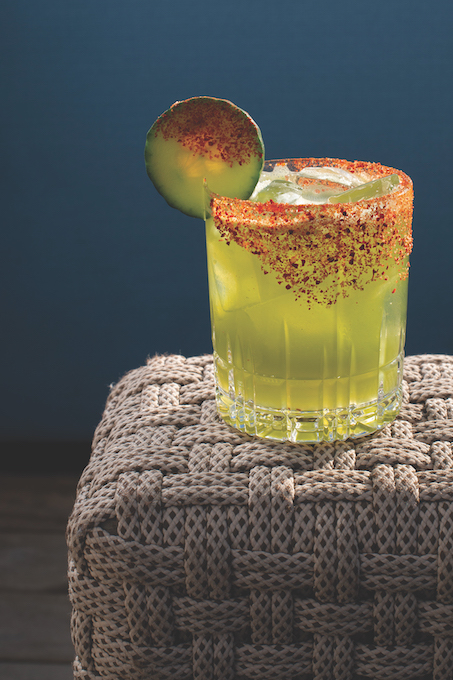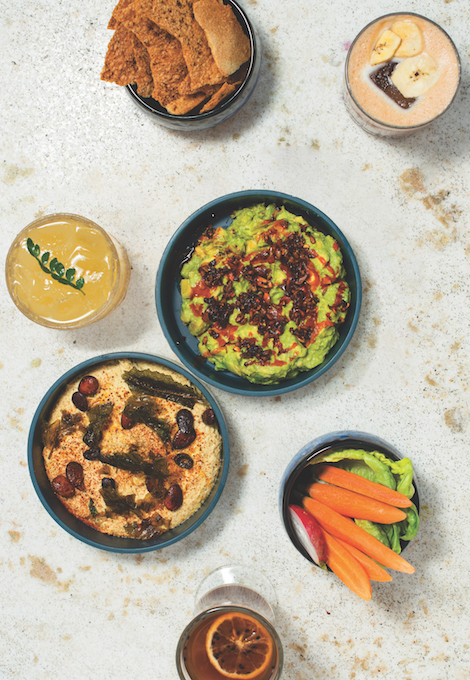
Indulge your taste buds with spicy cuisine that packs a punch.
By Tanya A. Yacina
The enjoyment of spicy foods is influenced by many factors, from cultural to biological and psychological. Some can tolerate more fiery flavor in a dish than others but, if local restaurant menus are any indication, dishes and even drinks that bring the heat continue to prove popular.
“Personally, I love spice. I think, … almost, … food is not worth eating if it does not come with a kick,” says Helene Henderson, founder of Malibu Farm and Skal Pizza, adding that the spice level in restaurant dishes often needs to be tweaked based on feedback to get it just right.
“Customers often think things are too spicy when they are not—to me,” she says. “As a general rule, if, every day, several guests say it is too spicy, then it is probably too spicy. But if nobody ever says it is too spicy, then it is too mild. The sweet spot of spicy level—or rather the hot spot—is the occasional guests saying it is too hot.”
Ignite Your Appetite
There are many ways to add spiciness to a dish by incorporating certain ingredients and employing different cooking techniques. Sauces, pastes, powders and oils, as well as balancing the heat with sweetness or cream or fermenting fresh ingredients, can all add kick to a dish.
“I prefer to make spicy sauces: There are more techniques that can be used to enhance the flavor profile during the creation of a sauce—among them being fermentation and pickling,” says Riley Huddleston, chef-partner of Lido House hotel, which includes The Mayor’s Table restaurant and Topside rooftop bar. “I love using fermented chiles. Fermentation elevates the flavor profile of the chiles while bringing out their heat. It adds a slightly unexpected layer of flavor.”
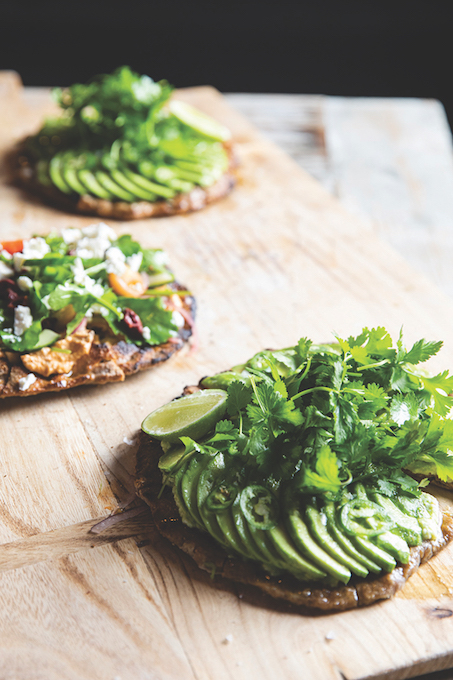
The Mayor’s Table features masa-fried chicken with a spicy umami rub; served on the bar menu in a bucket atop signature fresh-cut french fries. Huddleston says the umami rub is a secret blend of four chiles that present different levels of spice to the palate; dried kombu (seaweed) adds umami while pulling flavors from the chiles.
Henderson is also passionate about peppers—all of them. “I am an equal lover of peppers—Fresno, shishito, habanero—any color, any spice level. Char them, eat them raw or blend them with a sweetener, salt and something acidic,” Henderson says. “Making pickled Fresno chiles is always easy and fast, and an excellent way to preserve them to last longer than fresh chiles.”
Malibu Farm’s menu features Korean short ribs with house-made chile adobo sauce. Henderson describes this as a mix of carrots, ginger, cumin and soy sauce, following the “classic play book” by combining something sweet (the carrots), something acidic (the soy sauce) and something spicy to create a not-too-hot, yet not-too-mild spice level.
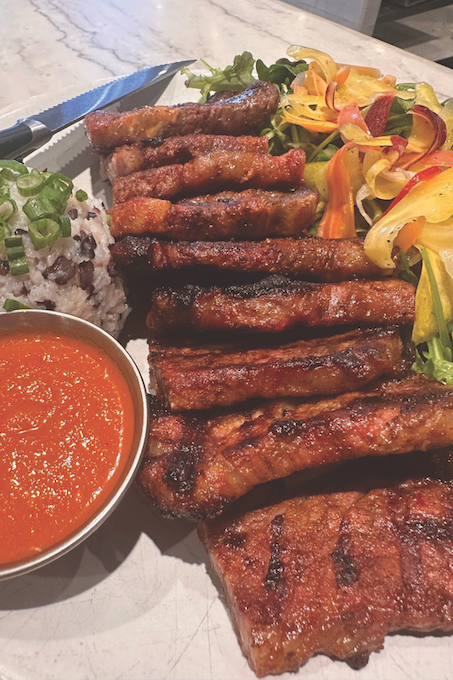
And for patrons seeking spice, Skal’s menu offers an avocado pizza with jalapeno ricotta, sliced avocado and serrano chiles. The pizza dough is baked and, once it is golden and puffy with some charred areas, the ricotta cream, sliced avocado, serrano chiles and cilantro are spread onto it. It is then drizzled with agave, sprinkled with salt and served with lime slices.
For a different twist, The Beachcomber at Crystal Cove serves spicy ahi nachos, which begin with diced ahi tuna, avocado, crispy wontons, green onions and toasted sesame seeds, then add some zest from spicy aioli and a garlic sweet chile sauce; microcilantro soy citrus vinaigrette completes the dish. Joey Newport Beach gives a kick of spice with the balance of sweet in the Szechuan chicken lettuce wraps, an appetizer with sweet soy ginger glaze, spicy aioli, iceberg lettuce wraps, peanuts and crispy wontons for added crunch; diners can also choose to sub tofu or prawns for the chicken.
Liquid Heat
Spice can also be added to cocktails to kick it up a notch and complement the libation’s flavors. Huddleston says his favorite spicy cocktail at Topside is called the Devil to Pay, which is made by combining the smoky and spicy Flecha Azul blanco tequila with cool cucumber, lime and sweet agave for balance in a glass with a spiced rim.
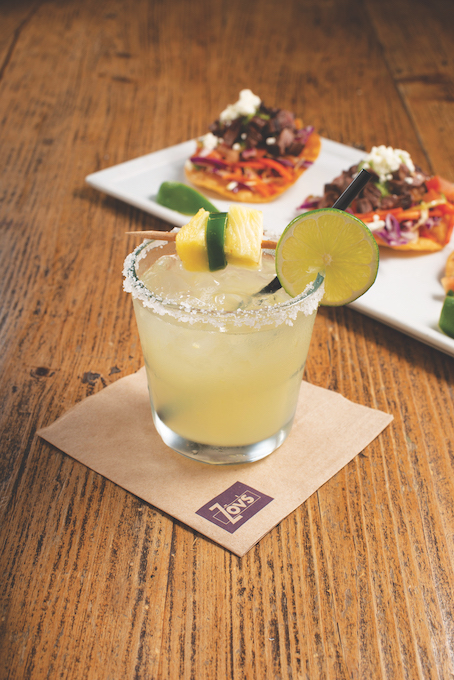
“It’s been a menu mainstay since day one,” he says. “It’s our elevated version of the ever-popular skinny margarita.”
To tempt the taste buds, Lighthouse Café creates a spicy mango margarita with Casamigos tequila, jalapeno juice and chamoy tempered with fresh lime, agave and mango puree to help ease the burn. Zov’s highlights pineapple in its spicy margarita, which brings together Tanteo jalapeno-infused tequila, fresh pineapple puree, fresh lime juice and agave. For a michelada, head to The Beachcomber, which puts its spin on the classic by combining Mexican beer with house spicy mix in a glass with a chile-spiced rim.
Nobu Newport Beach has the Smokin’ Aces cocktail up its sleeve for those seeking smoldering sips. This drink combines Dos Hombres mezcal, Ancho Reyes chile liqueur, cantaloupe puree, lemon juice and agave. Kick it up a notch by pairing the libation with the yellowtail jalapeno or tuna wasabi salsa among other piquant dishes. In fact, Nobu’s namesake chef and founder is known for mixing Japanese dishes and Peruvian ingredients, which includes many types of peppers, so there are plenty of spicy options.
Spice It Up at Home
Henderson says that the main thing to focus on when crafting spicy concoctions in your own kitchen is to be careful.
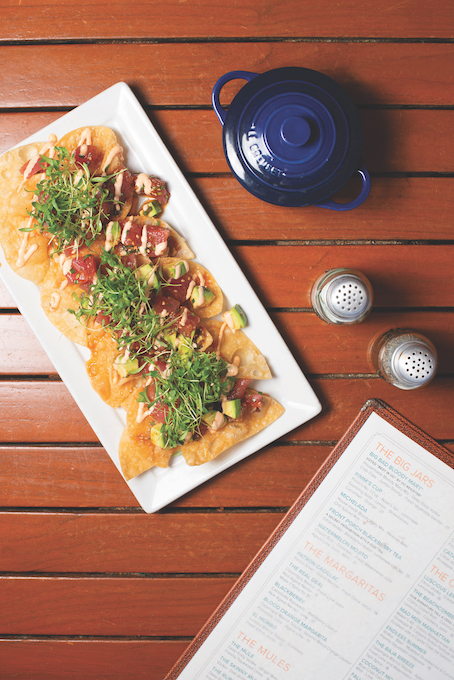
“Don’t touch chiles and then your eyes or nose—ouch! If you use a blender or food processor, do not open the lid and lean over at once [as] that could lead to a coughing attack,” she says. “Stay back for a minute while the ‘hot’ air settles. … It is not very cool to be sneezing and crying right before dining.”
Speaking generally, Henderson says her favorite ingredients to use are lemon and chiles, and she tries to incorporate these everywhere it makes sense.
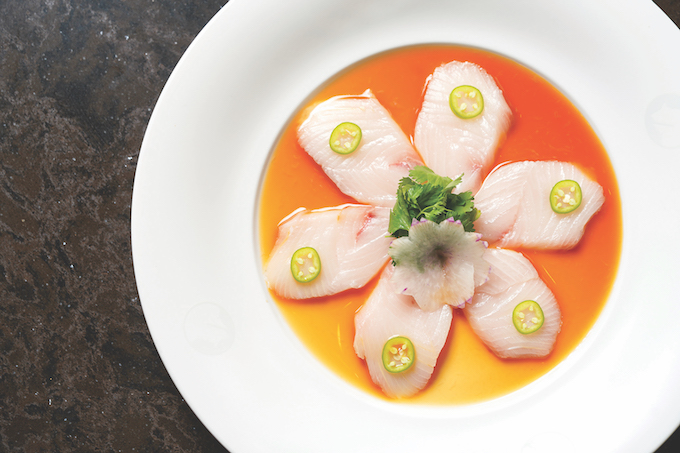
“I also am a fan of mayonnaise—vegan or traditional. You can never go wrong by adding any spice or hot sauce to mayonnaise,” she explains. “As a Swede, I love my smorgasbord and love a variety of foods for all meals. And I always include something spicy. It can be as simple as a fresh tomato salsa or cucumbers with Fresno chiles, a spicy aioli, pickled Fresno chiles on charred broccolini, [or] a loaded baked potato with butter and cream, topped with chiles and herbs.”
Huddleston says fermentation and pickling can enhance the spiciness of chiles, especially if the seeds are left to leech heat into the pickling liquid. He suggests when using dried chiles to let them soak in a solution of water and vinegar, then use that liquid in your preparation of the dish.
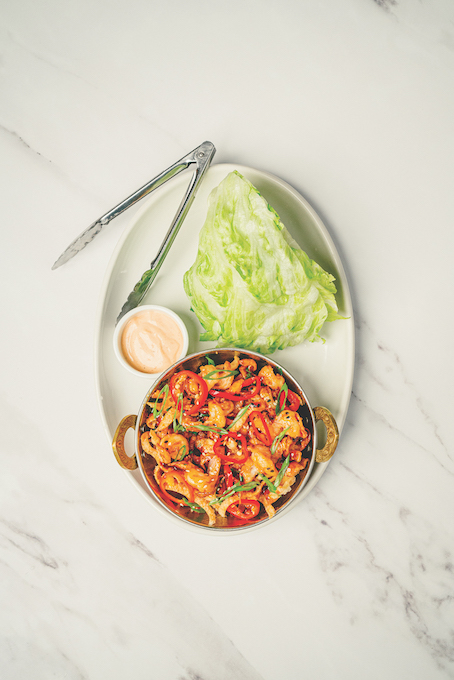
“When you add vinegar to chiles, it not only provides a tangy kick, but also plays a crucial role in extracting and preserving the flavors,” he says. “The acidity in vinegar helps break down and extract the essential oils and flavors from the chiles, intensifying their taste.”
Huddleston adds that it’s important not to forget gloves when creating a spicy rub or sauce. Of course, knowledge can be as vital as the tools when working with chiles. Chefs should have an understanding of the flavor nuances and heat level of each kind of pepper before using them. Knowing what makes a pepper unique allows a chef to really showcase the spice and play up its flavor profile in different dishes.


